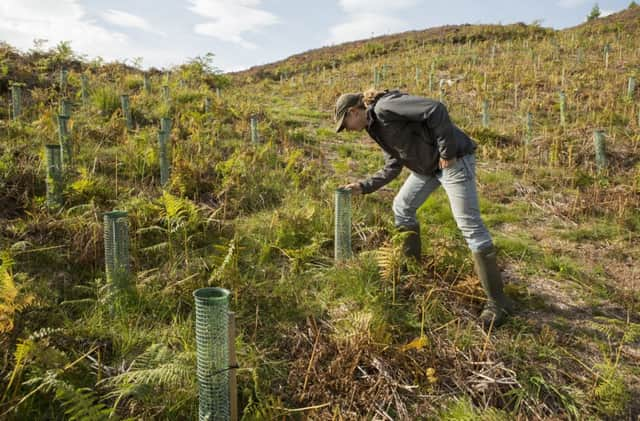Lewis woods are living memorial to island's fallen heroes


A total of 130 forests are being created across the country as part of the charity’s First World War Centenary Woods project, which marks the 100th anniversary of the conflict.
The Isle of Lewis suffered heavy losses during the war, losing almost an entire generation of men – 1,141 out of a total population of 29,603.
Advertisement
Hide AdThe community was left further devastated by a tragic shipwreck that saw nearly 200 returning fighters drowned within sight of their homes.
Today’s landscape is relatively treeless, but evidence shows the area was once covered in natural woodlands.
These were felled centuries ago as people cleared the land for farming.
As part of the Centenary project, 14 woods are being planted on local crofts.
Skye, Barra, Islay and North Uist are also getting new forests, with schemes ranging from 300 to 1,350 trees.
Planting has already begun, with the last trees expected to be in place by the end of this year.
Advertisement
Hide AdLewis crofter Donald MacDonald, from Back, is one of those taking part in the initiative.
“The Isle of Lewis has deep connections to the Great War, both because so many lost their lives and because of the Iolaire tragedy,” he said.
Advertisement
Hide Ad“There are many memorials to the fallen, but it’s nice to have one that is a living, growing reminder of sacrifice and bravery, and I’m grateful to the Woodland Trust for making that possible for me.”
He has erected a sign by his wood that reads: Mairidh an cliù gu bràth – Gaelic for Their fame shall last forever.
Viv Halcrow, Woodland Trust Scotland’s croft woodlands advisor for the islands, said: “The tragedy of the First World War is still keenly felt by people here.
“There was disproportionate loss of life in the islands, and of course unimaginable sorrow around the foundering of the Iolaire bringing men home at the end of the war.
“Townships where people were, and still are, closely interrelated and interdependent felt the losses very badly. It is true to say that a generation of fit, active men was effectively wiped out.
“I feel it isn’t overstating the importance of the war here to say that Lewis has never recovered. Planting trees is a very appropriate way to commemorate events, sad or happy.
Advertisement
Hide Ad“The 14 crofters who agreed to take part in the Woodland Trust First World War tree-planting scheme did so thoughtfully and with pride.”
Four flagship national woods have also been created – in Scotland at Dreghorn Woods near Edinburgh; in England at Langley Vale in Surrey; in Wales at Coed Ffos Las in Carmarthenshire; and in Northern Ireland at Brackfield Wood in County Londonderry – as well as many smaller community woods.
Advertisement
Hide AdThe Woodland Trust’s First World War Centenary Woods project is supported by supermarket chain Sainsbury’s, which is helping plant millions of native trees to commemorate the battle through donations from sales of products including eggs, chicken and turkey.